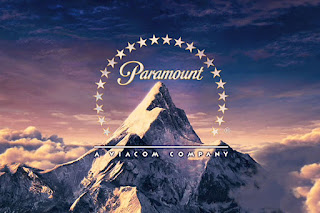STUDIO ERA
When you hear about Hollywood , you probably think of big budget movies , star studded premiers ,and studios with giant backlots pumping out film after film.
Most of those association really began sometime between the 1920s and the 1950s.Once audiences could hear actors speak, listen to pre-recorded musicals scores ,and enjoy sound effects ,film cemented its place as the main medium for mass communication ,art and commerce.As important as Hollywood was during the silent era ,nobody could compete after the arrival of sound.New major film studios emerged ,each with their own style and favorite celebrities.This cascade of film led to more technological innovation ,like color film and the widescreen formats we still use today.
This was the golden age or studio era of Hollywood.
After the stock Market Crash in October pf 1929 ,most parts of the American economy took a real hit but not Hollywood ,and at the height of the great Depression in 1933, roughly a quarter of the American workforce couldn't find a job ,and million of others were barely making ends meet.So you'd think the last thing people would do with their hard earned money was go to the movies.And yet ,the Depression was one of the best things to happen to the American film business.In fact, more films were released by the major studios during 1920s and '30s than any other decade-averaging about 800 a year, compared to less than 500 per year today.It was cheaper to go to the movies than a play or a concert ,and cinema became a means of escape.Films are an illusion of reality and the illusion was super attractive to people whose day to reality was ofter pretty bleak.Genre films became more popular such as gangster film, musicals ,westerns and screwball comedies.Anything to take people's own struggles and celebrate good old American values of optimism ,resilience, ambition and courage.At the height of Hollywood's Golden age five film studios ruled

- Established in 1924, by merger of Loew's, Inc. theater chain with three production companies (Metro Pictures/Goldwyn Pictures/Louis B. Mayer Productions)
- Leader in stars, glamour, spectacle: consider Gone with the Wind and Wizard of Oz, both 1939
Paramount Picture Corp
- Established as a distribution company in 1914, it was acquired by Adolph Zukor in 1917, who merged it with his production company, Famous Players-Lasky Corp., and then started buying theatres, making it the first fully vertically-integrated company
- silent era stars: Mary Pickford, Douglas Fairbanks, Gloria Swanson, William S. Hart, Fatty Arbuckle
Established for exhibition in 1913 by William Fox; producing fims by 1915."20th C" after 1935 merger with production company headed in part by Darryl F. Zanuck, former Warners production head who had just left United Artists
known for musicals; westerns and crime films after 1948; The Robe (1953), 1st Cinemascope feature film
directors: John Ford, Elia Kazan, Joseph Mankiewicz
directors: John Ford, Elia Kazan, Joseph Mankiewicz
Warner Brothers
Established in 1924 by Harry, Jack and Albert Warner
1st sound film: The Jazz Singer (1927)
fully integrated only by 1928-30, with acquisition of First National Pictures theatre chain (which had come into being in 1917 to resist Adolph Zukor)

RKO
An immediate major, born of the 1928 merger of Radio Corporation of America with Keith and Orpheum theatres to exploit its "Photophone" movie sound system"unit production" introduced by David O. Selznick (contracting with individual directors for a certain number of films, free of studio interference)hence Citizen Kane (Welles), King Kong, Bringing Up Baby (Hawks), Notorious (Hitchcock)
The end of the Golden Era
On May 4, 1948, in a federal antitrust suit known as the Paramount case brought against the entire Big Five, the U.S. Supreme Court specifically outlawed block booking. Holding that the conglomerates were indeed in violation of antitrust, the justices refrained from making a final decision as to how that fault should be remedied, but the case was sent back to the lower court from which it had come with language that suggested divorcement ,the complete separation of exhibition interests from producer-distributor operations—was the answer. The Big Five, though, seemed united in their determination to fight on and drag out legal proceedings for years as they had already proven adept at—after all, the Paramount suit had originally been filed on July 20, 1938.
MAJOR STUDIOS NOW










Comments
Post a Comment